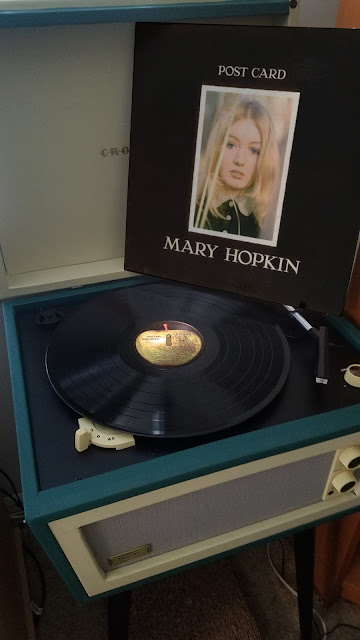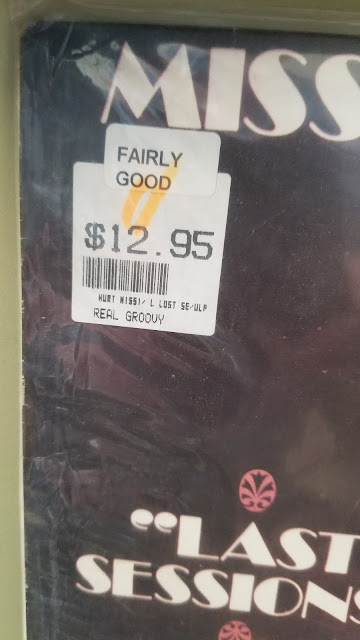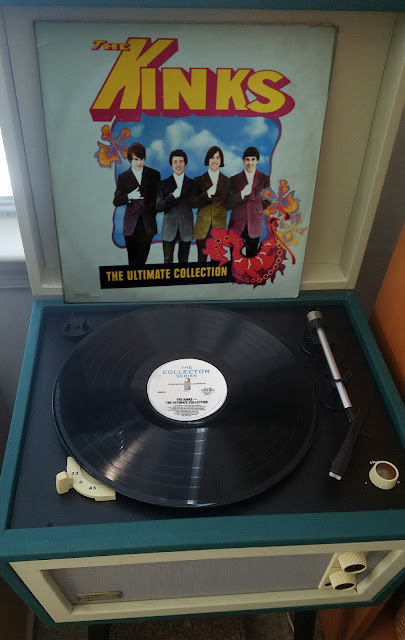The old adage says two heads are better than one. In that case, a trio of Talking Heads must be better yet.
CBGB, the New York City music club has been mentioned in previous posts in connection with Patti Smith, Blondie and The Ramones. It's also where Talking Heads first performed under that name in 1975, as the opening act for the aforementioned Ramones.
They released their first album in 1977, titled, obviously, 'Talking Heads: 77'. The standout single from the album was 'Psycho Killer' which was immediately linked to the infamous 'Son of Sam' serial killings of the same year. The killings may have influenced the timing of the release, but the band first wrote and started singing it back as early as 1974/5 when they were still known as the Artistics.
Fast forward to 1983 when the first of these featured albums came out. 'Speaking in Tongues' After having Brian Eno produce their three previous studio albums, this was their own baby. As well as the excellent 'Burning Down the House' and 'Girlfriend is Better' it also included my personal favourite song, 'This Must Be the Place (Naive Melody)'. As David Byrne said, it's a love song made up almost entirely of non-sequiturs. Lines like "The less we say about it the better" - "Make it up as we go along" - "I can't tell one from the other". A slightly nonsensical song that is a lot of fun.
'Stop Making Sense' is the live album soundtrack to the movie of the same name. It contains some of the songs from 'Speaking ....' as well as previous stuff like 'Once in a Lifetime' and 'Take Me To the River'. It's a must-have in terms of a slice of history as well as being referred to in some circles as 'a bona-fide classic'. Not sure I'd go that far, it was a bit patchy and maybe overly mixed, but if you really want to get the best out of it, the 1999 re-release cures some failings.
The third in this line-up of todays 3 for 1 review is 'Little Creatures'. No less than 4 songs that make it on to my must-have playlist come from this album. 'And She Was', 'The Lady Don't Mind', 'Walk It Down' and last but very much not least, the rollocking, sing-along rock song 'Road to Nowhere'.
I'm linking to the 'Road to Nowhere' video for a couple of reasons. Firstly, it's a great song. Secondly, it was co-directed by Stephen R Johnson who did the Peter Gabriel 'Sledgehammer' and 'Big Time' music videos. It's pretty obvious he used the same techniques.
Most of Taking Heads attention is and has always been on David Byrne. Forever known for wearing his iconic 'big suit' he has always been the focal point of the group. Tina Weymouth and husband Chris Frantz, bassist and drummer respectively, created a side project called Tom Tom Club and if nothing else gave us the 1981 hit 'Genius of Love'. Known as a song in it's own right it's also one of the most sampled rhythm tracks of the 80's, being used by the likes of Grandmaster Flash, Busta Rhymes, Public Enemy, 50 Cent and believe it or not Mariah Carey.
In February 2020 David Byrne made his first appearance on Saturday Night Live in 30 years. He performed 'Once in a Lifetime' and 'Toe Jam' from 'American Utopia', an album and stage show performed between October 2019 and February 2020.
Get one, two or all three of these albums for a rare treat. Or, go modern and find a compilation. Either way, Talking Heads is required listening. Enjoy !!































